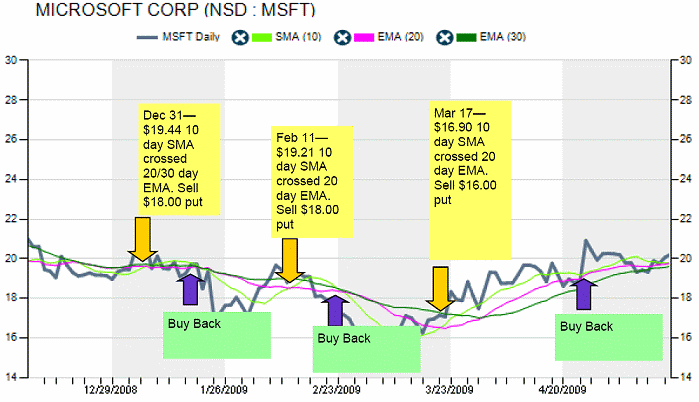
The Exponential moving average is a more advanced version of the simple moving average and differs in that it doesn’t place the same weight on all data points. Simple moving average= (C1 + C2 + C3 + C4 + … + Cn) / n So, if you’re calculating the 200-day moving average, you will have to take the sum of all the 200 previous closes. To calculate the Simple Moving Average, you simply need to calculate the average of the data points, in this case closing prices, for the lookback length you’ve chosen.
#Moving averages for day trading how to
How To Calculate the Simple Moving Average That means that if you have a simple moving average with a length of 200 days, the price 200 days ago will have as large an impact on the calculation as the price one day ago. All data points that are part of the calculation are equally weighted, unlike, for example, the exponential moving average. Despite its simplicity, it’s one of the most used of all moving averages and provides solid guidance for investors and traders. The simple moving average is, exactly as it sounds, a simple, plain moving average. If you’re a beginner and find all the alternatives overwhelming, we recommend you, at least for now, not to care about the other more complicated versions. However, you will come very far just by using the first one on this list. There are many moving averages to choose from, and at first sight, it might seem overwhelming. Therefore, for those new to investments and trading, the standard average lengths are the best ones to start with. Once the price approaches the commonly agreed resistance or support level, market participants’ eagerness to fuel price movement further will decrease. It becomes a sort of self-fulfilling prophecy.

If enough people use, let’ ‘s say a 200 day moving average, that very moving average will leave its mark on the market. One of the strengths of moving averages lies in that other traders and investors use them in their decision-making. Normally, optimal lengths vary with time, market, and strategy. As always, there isn’t any definite answer as to what works best. Since moving averages can have different lookback lengths, you’re left with many choices as to what settings will work the best in your market and with your strategy. (This will be covered more in-depth later in the article!) Which Is The Best Period Length? Investors and traders often use it to gauge whether the market is bearish or bullish and to time the longer swings of the equity markets. Of these, the 200-day moving average is the most widely used indicator. The most common and widely used setting for a moving average, are the 5, 10, 20, 50, 100, and 200 bar moving averages. A longer lookback serves well to measure long-term trends, while shorter lengths are better at discovering momentum and the short-term direction of the market. The length of the moving average depends on what it’s used for. The average is then plotted on the chart, giving traders and investors the ability to visually determine the direction and strength of the trend. This is done by calculating an average of the price, typically the close price, with the length of the lookback period. Note that moving averages sometimes will be referred to as “MA” What Is A Moving Average?Ī moving average is a technical indicator that is used to smoothen price action. We will also have a look at different common concepts that include moving averages, such as golden and death crosses. Simple_cum_relative_return_exact = simple_cum_strategy_asset_relative_returns.sum(axis=1)Īx.plot(cum_relative_return_exact.index, 100*cum_relative_return_exact, label='EMA strategy')Īx.plot(simple_cum_relative_return_exact.index, 100*simple_cum_relative_return_exact, label='Buy and hold')Īx.set_ylabel('Total cumulative relative returns (%)')Īx.xaxis.In this article, we will learn what moving averages are, and how they can be used in trading and investing.

Simple_cum_strategy_asset_relative_returns = np.exp(simple_cum_strategy_asset_log_returns) - 1

# Transform the cumulative log returns to relative returns Simple_cum_strategy_asset_log_returns = simple_strategy_asset_log_returns.cumsum()

# Get the cumulative log-returns per asset Simple_strategy_asset_log_returns = simple_weights_matrix * asset_log_returns # Get the buy-and-hold strategy log returns per asset Simple_weights_matrix = pd.DataFrame(1/3, index = data.index, columns=lumns) # Define the weights matrix for the simple buy-and-hold strategy To get all the strategy log-returns for all days, one needs simply to multiply the strategy positions with the asset log-returns. How much is this lag $L$? For a SMA moving average calculated using $M$ days, the lag is roughly $\frac$. However, this comes at a cost: SMA timeseries lag the original price timeseries, which means that changes in the trend are only seen with a delay (lag) of $L$ days. It is straightforward to observe that SMA timeseries are much less noisy than the original price timeseries.


 0 kommentar(er)
0 kommentar(er)
